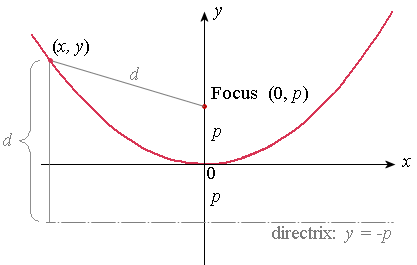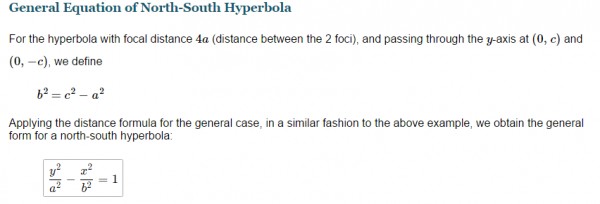The Parabola
Why study the parabola?
The parabola has many applications in situations where:
- Radiation often needs to be concentrated at one point (e.g. radio telescopes, pay TV dishes, solar radiation collectors) or
- Radiation needs to be transmitted from a single point into a wide parallel beam (e.g. headlight reflectors).
Here is an animation showing how parallel radio waves are collected by a parabolic antenna. The parallel rays reflect * the antenna and meet at a point (the red dot, labelled F), called the focus**.
Definition of a Parabola
The parabola is defined as the locus of a point which moves so that it is always the same distance from a fixed point (called the focus) and a given line (called the directrix).The word locus means the set of points satisfying a given condition.
In the following graph,
- The focus of the parabola is at (0,p).
- The directrix is the line y=−p.
- The focal distance is ∣p∣ (Distance from the origin to the focus, and from the origin to the directrix. We take absolute value because distance is positive.)
- The point (x, y) represents any point on the curve.
- The distance d from any point (x, y) to the focus (0,p) is the same as the distance from (x, y) to the directrix.
- The axis of symmetry of this parabola is the y-axis.

theformula for a parabola:
x2 = 4py
In more familiar form, with "y = " on the left, we can write this as:
y = x2/ 4p
where p is the focal distance of the parabola.
A hyperbola is a pair of symmetrical open curves. It is what we get when we slice a pair of vertical joined cones with a vertical plane.
The Hyperbola
How do we create a hyperbola?
Take 2 fixed points A and B and let them be 4a units apart. Now, take half of that distance (i.e. 2a units).
Now, move along a curve such that from any point on the curve,
(distance to A) − (distance to B) =2a units.
The curve that results is called a hyperbola. There are two parts to the curve.
